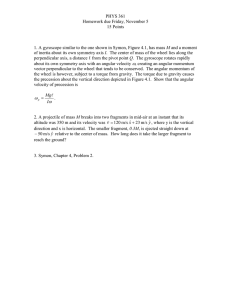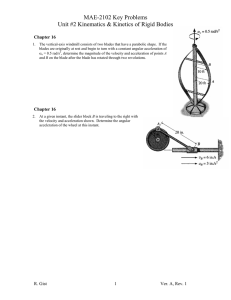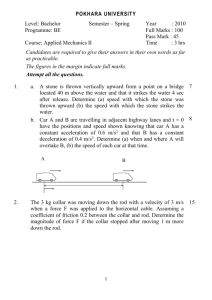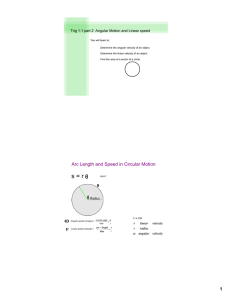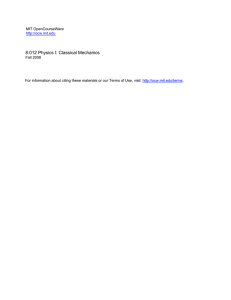NAME_______________________ (1) In the figure, a uniform beam, mass M =...
advertisement
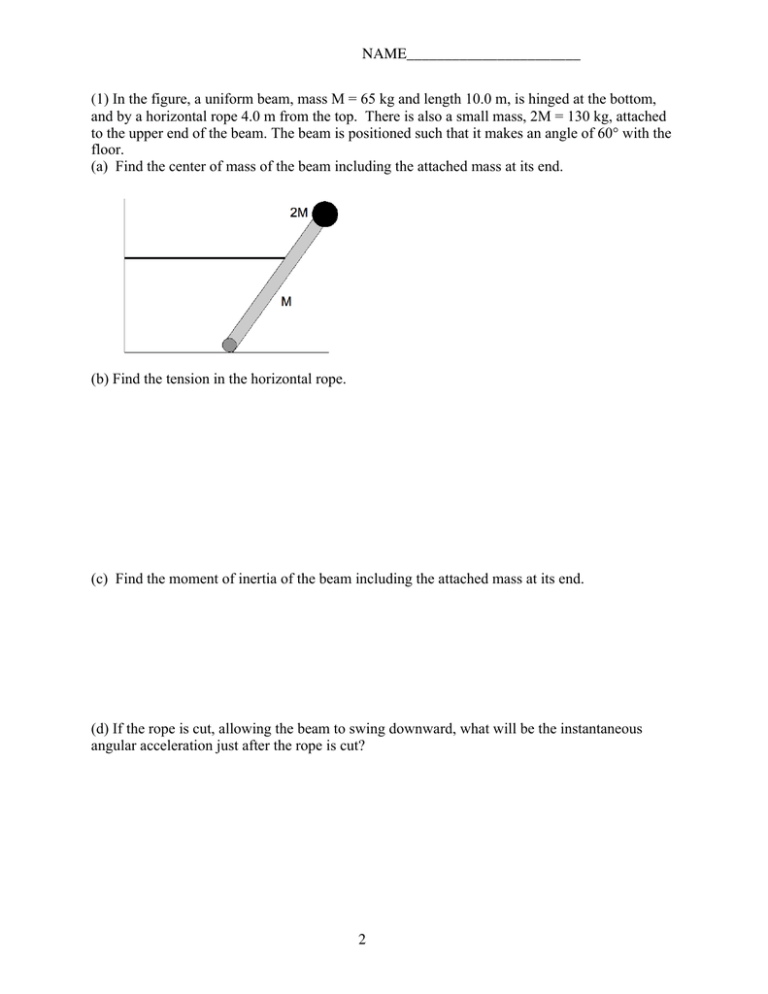
NAME_______________________ (1) In the figure, a uniform beam, mass M = 65 kg and length 10.0 m, is hinged at the bottom, and by a horizontal rope 4.0 m from the top. There is also a small mass, 2M = 130 kg, attached to the upper end of the beam. The beam is positioned such that it makes an angle of 60° with the floor. (a) Find the center of mass of the beam including the attached mass at its end. (b) Find the tension in the horizontal rope. (c) Find the moment of inertia of the beam including the attached mass at its end. (d) If the rope is cut, allowing the beam to swing downward, what will be the instantaneous angular acceleration just after the rope is cut? 2 NAME_______________________ (2) A 150-kg table rolls on frictionless casters, with an initial velocity of 0.50 m/s. This table then rolls into a stationary 300-kg desk, which also rolls without friction on the floor. If the table recoils directly back along the direction of impact, with a velocity of 0.10 m/s, (a) Find the final velocity of the desk. (b) Is this an elastic collision? Why or why not? (3) A satellite has just been deployed in orbit, and is spinning about its axis with angular velocity ω. At this point, solar panels, which spin with the satellite, are extended on arms that stretch away from the rotation axis. Find the true statement. (a) ω remains constant, due to conservation of angular velocity. (b) The angular velocity will increase, proportional to the increase of the moment of inertia. (c) Since this is a closed system, the moment of inertia remains constant. (d) The moment of inertia decreases, due to the energy expended in extending the solar panels. (e) The angular velocity decreases, due to conservation of angular momentum. (f) As long as the center of gravity is unchanged when the panels are extended, the angular velocity will remain unchanged. (g) The angular momentum decreases, due to conservation of energy. 3 NAME_______________________ (4) A solid ball of mass 5 kg and radius 0.10 m rolls down an incline of vertical height 10 m and horizontal length 20 m. The ball is initially stationary, and rolls without slipping. What is the ball velocity at the bottom of the incline? (5) In the figure, the bar is uniform, and has mass 200 kg. Its length d = 12.0 m, and support #1 is 2.0 m from the left side. Find the vertical force exerted by support #1. d 1 2 4 NAME_______________________ (6) Consider a wheel of given moment of inertia, I = 9.0 kg m2, and radius 0.25 m. (a) What steady tension in a string wound around this wheel is required to bring the wheel from rest to 30 radians/s in 5.7 s? (b) Through how many revolutions will the wheel in part (a) turn during the 5.7 s? (c) The picture above illustrates two points on this wheel during the process, with the rotation in the counterclockwise direction. Point A is located on the rim of the wheel and point B is halfway between the rim and the axis. Which one of the following statements is true concerning this situation? (i) Both points have the same centripetal acceleration. (ii) Both points have the same tangential acceleration. (iii) The angular velocity of A is greater than that of B. (iv) Both points have the same instantaneous angular velocity. (v) During each second, A turns through a greater angle than B. (vi) The linear acceleration at A and B are both zero. 5
